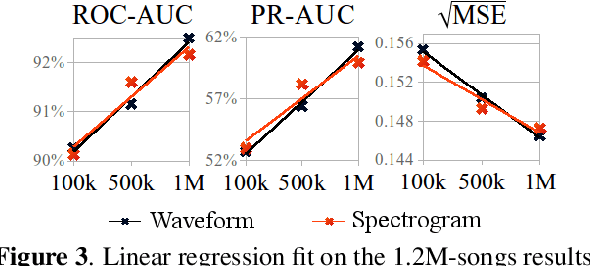End-to-end learning for music audio tagging at scale
Paper and Code
Jun 15, 2018



The lack of data tends to limit the outcomes of deep learning research, particularly when dealing with end-to-end learning stacks processing raw data such as waveforms. In this study, 1.2M tracks annotated with musical labels are available to train our end-to-end models. This large amount of data allows us to unrestrictedly explore two different design paradigms for music auto-tagging: assumption-free models - using waveforms as input with very small convolutional filters; and models that rely on domain knowledge - log-mel spectrograms with a convolutional neural network designed to learn timbral and temporal features. Our work focuses on studying how these two types of deep architectures perform when datasets of variable size are available for training: the MagnaTagATune (25k songs), the Million Song Dataset (240k songs), and a private dataset of 1.2M songs. Our experiments suggest that music domain assumptions are relevant when not enough training data are available, thus showing how waveform-based models outperform spectrogram-based ones in large-scale data scenarios.
 Add to Chrome
Add to Chrome Add to Firefox
Add to Firefox Add to Edge
Add to Edge